Abstract
Random-dot stereograms were found to be capable of producing fusional vergence amplitudes in the absence of monocular contours. These vergence amplitudes are not an artefact of monocular contours provided by the target borders or test instrument and are comparable in range to vergence amplitudes measured clinically with second degree fusion targets in an amblyoscope. We conclude that diplopia of monocularly recognisable contours is not necessary for producing fusional vergence amplitudes.
Full text
PDF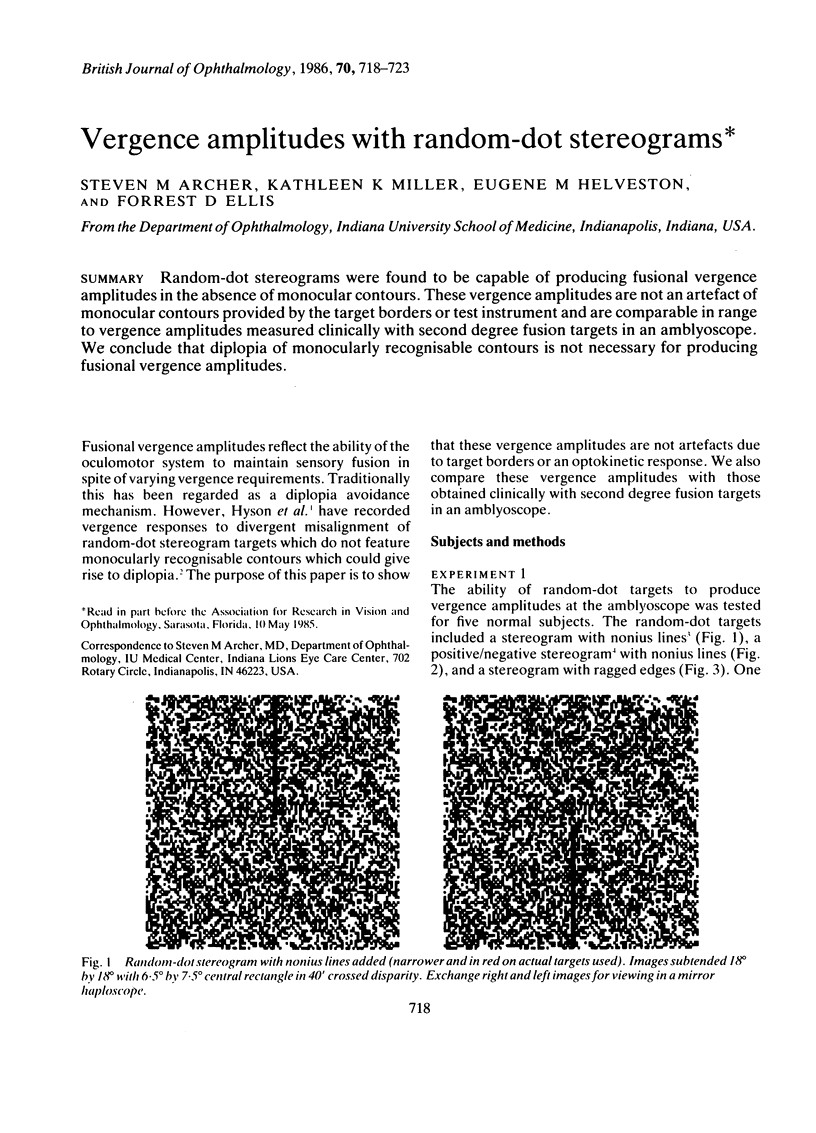
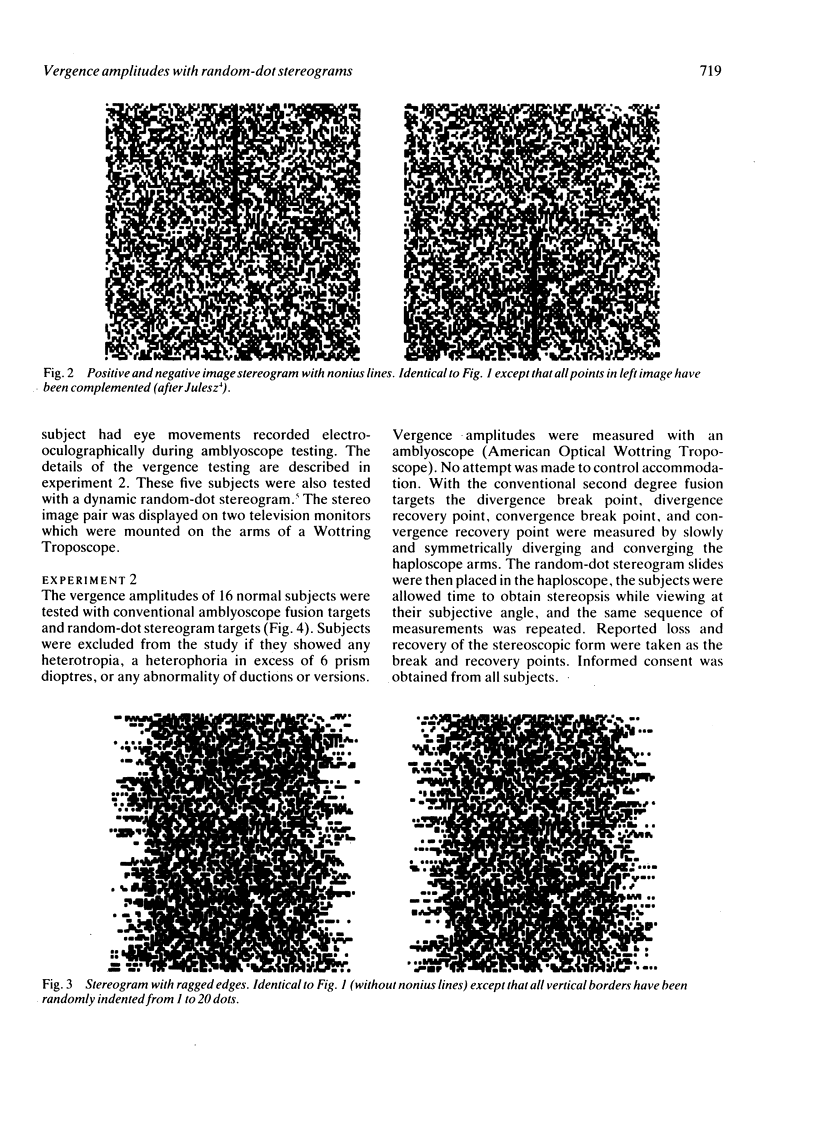
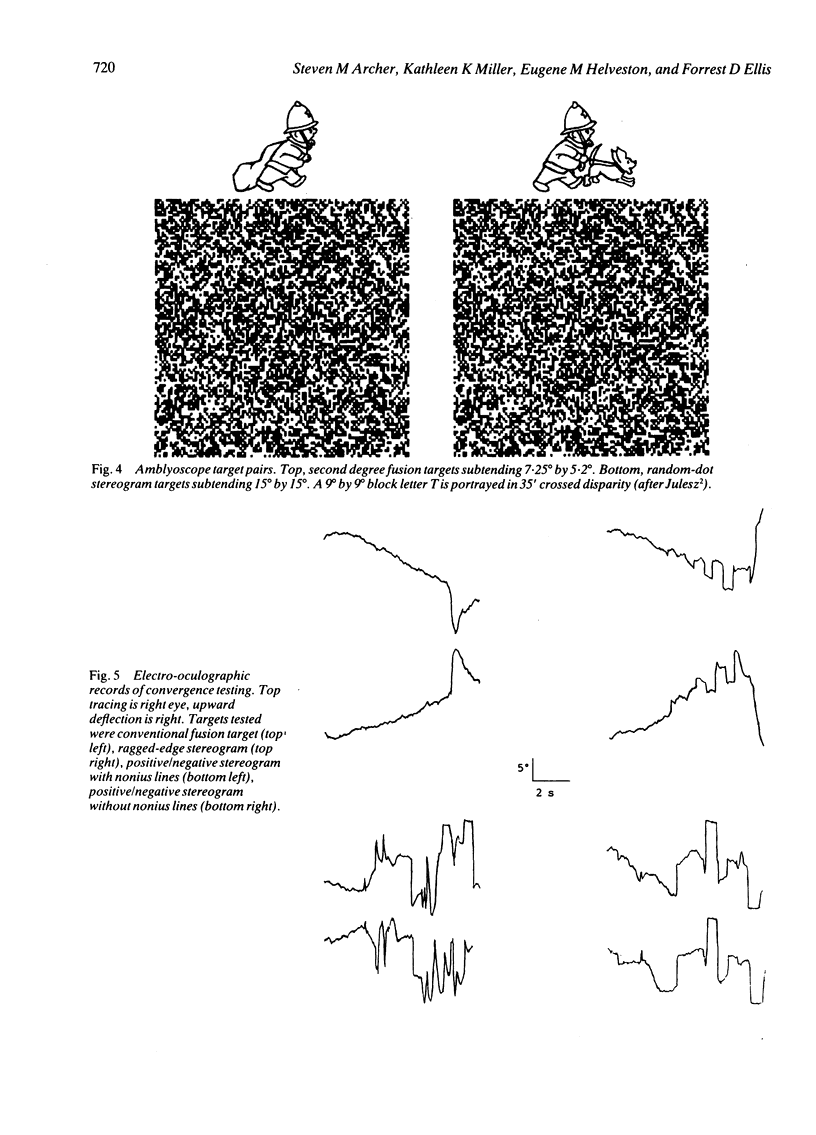
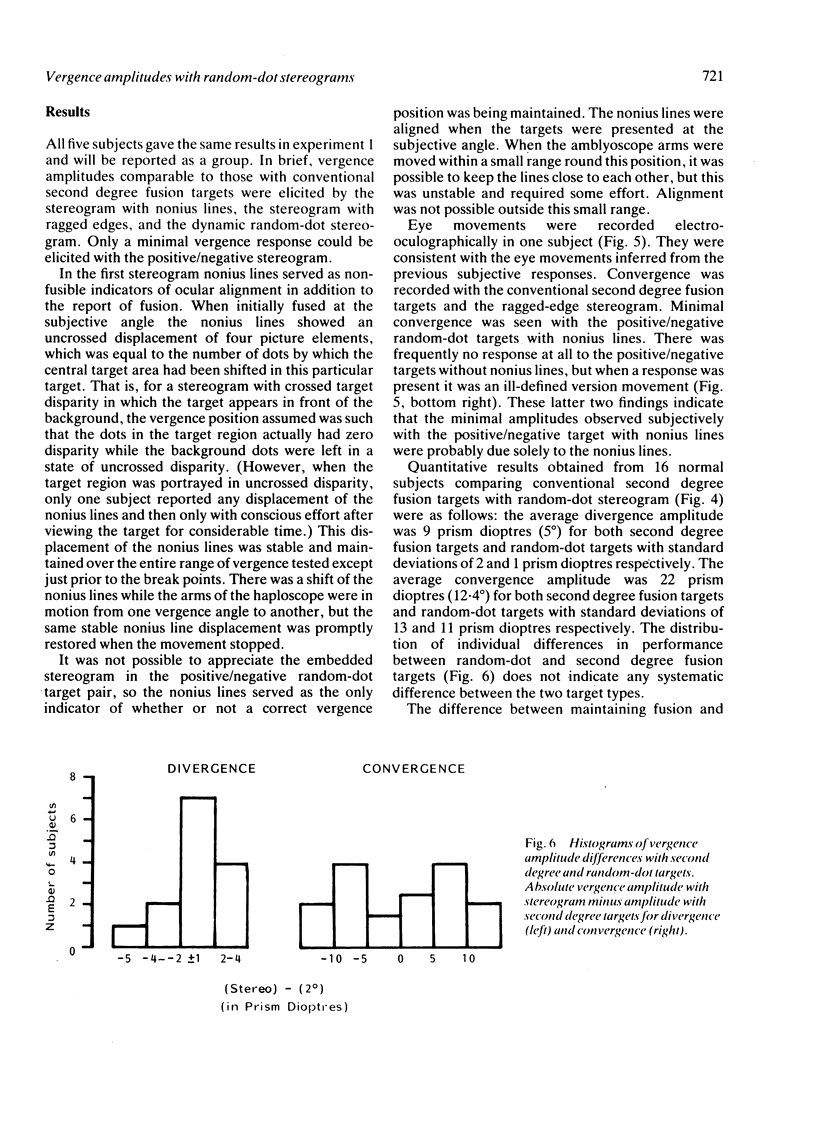
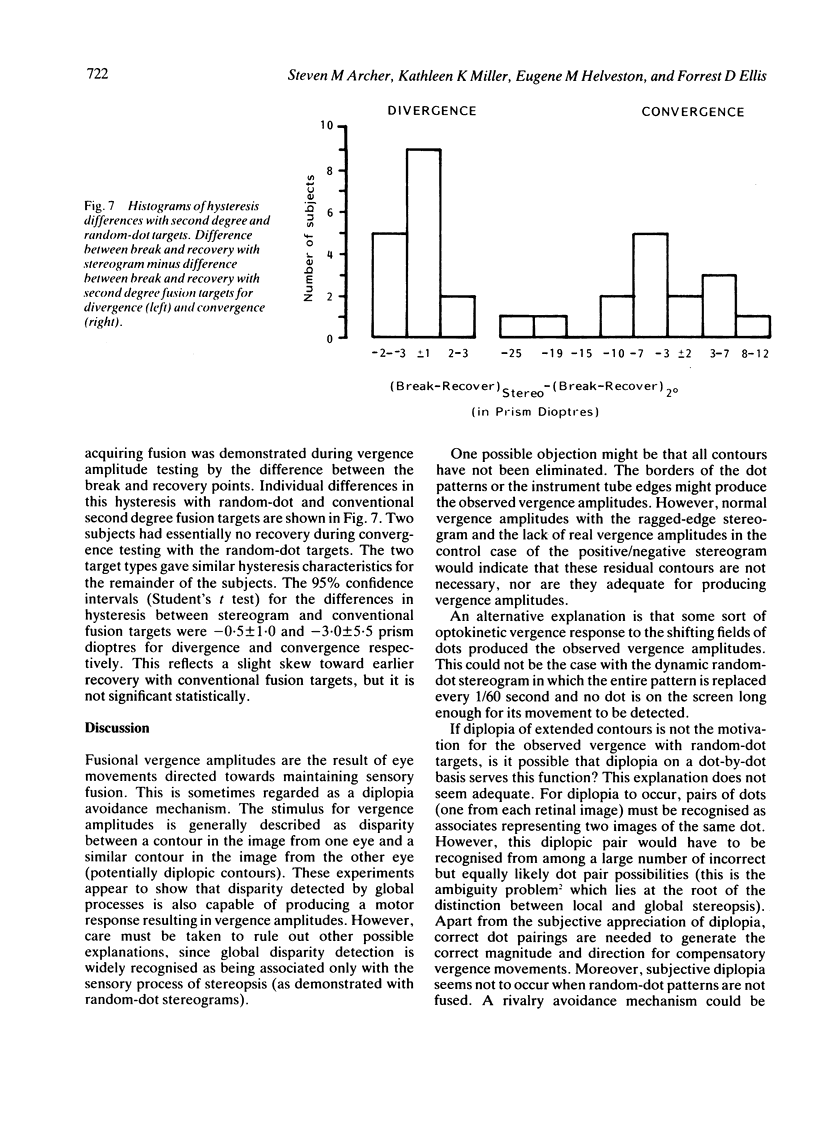
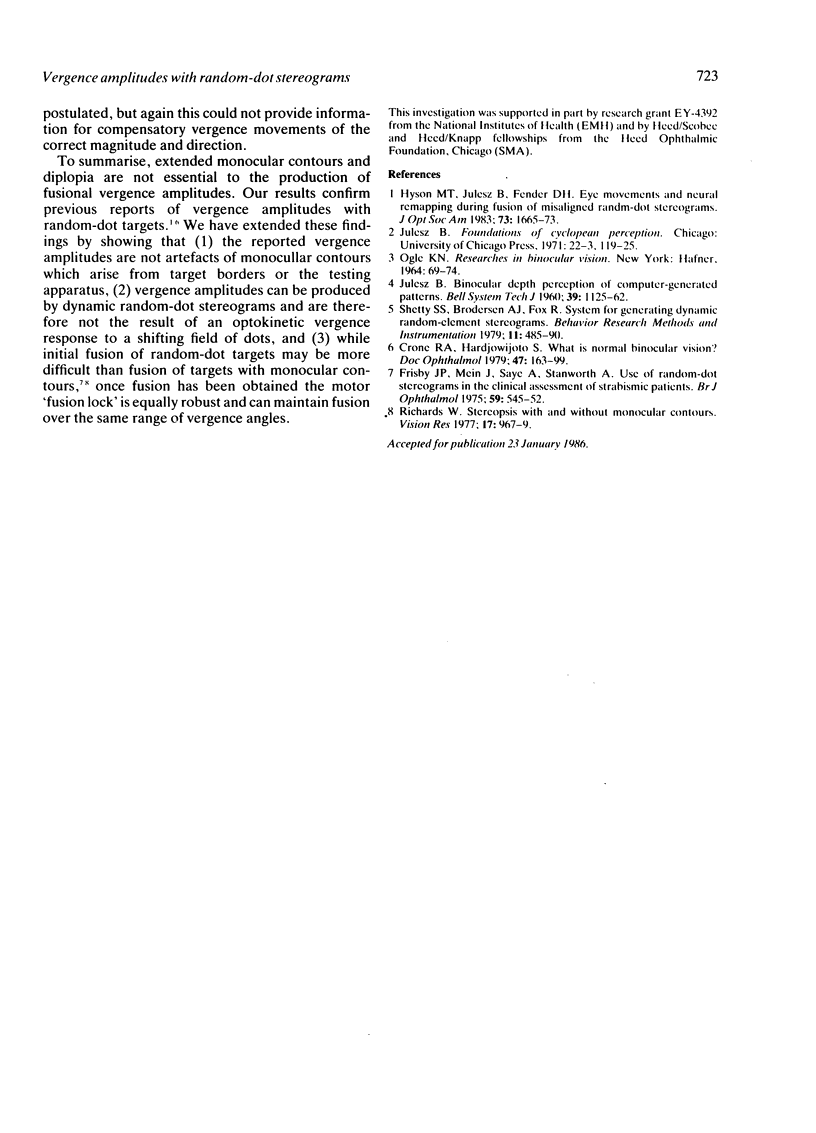
Selected References
These references are in PubMed. This may not be the complete list of references from this article.
- Crone R. A., Hardjowijoto S. What is normal binocular vision? Doc Ophthalmol. 1979 Sep 17;47(1):163–199. doi: 10.1007/BF00145374. [DOI] [PubMed] [Google Scholar]
- Frisby J. P., Mein J., Saye A., Stanworth A. Use of random-dot sterograms in the clinical assessment of strabismic patients. Br J Ophthalmol. 1975 Oct;59(10):545–552. doi: 10.1136/bjo.59.10.545. [DOI] [PMC free article] [PubMed] [Google Scholar]
- Hyson M. T., Julesz B., Fender D. H. Eye movements and neural remapping during fusion of misaligned random-dot stereograms. J Opt Soc Am. 1983 Dec;73(12):1665–1673. doi: 10.1364/josa.73.001665. [DOI] [PubMed] [Google Scholar]
- Richards W. Stereopsis with and without monocular contours. Vision Res. 1977;17(8):967–969. doi: 10.1016/0042-6989(77)90072-4. [DOI] [PubMed] [Google Scholar]


